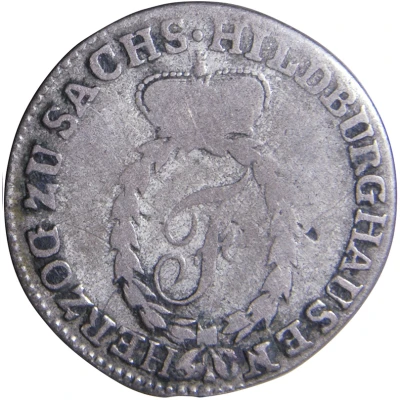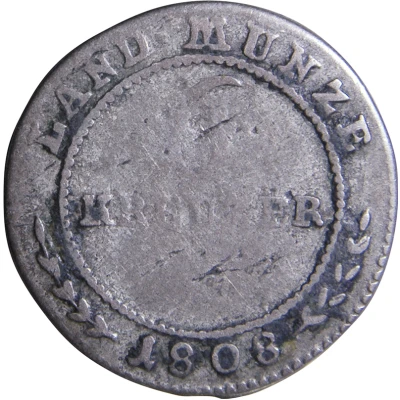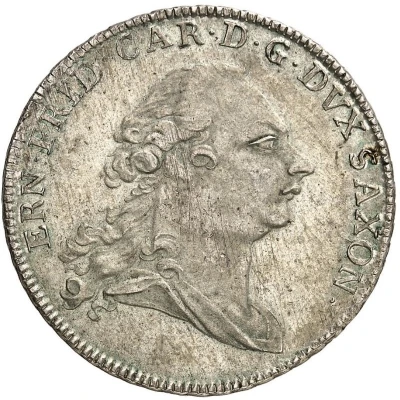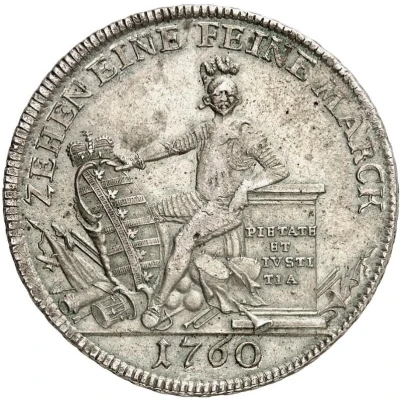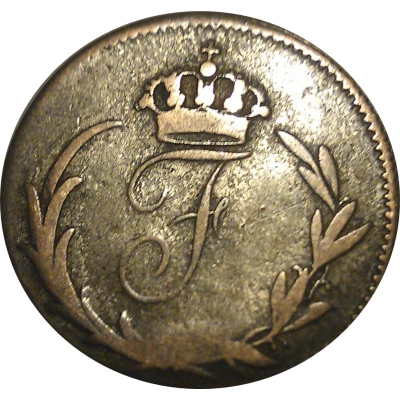
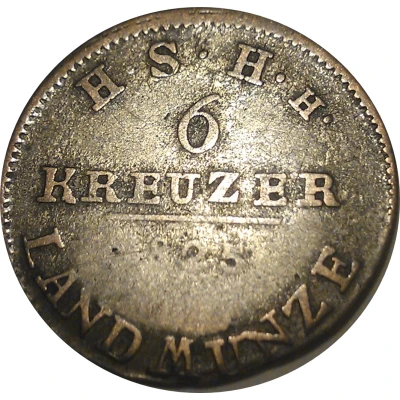

© mattei2b
6 Kreuzers - Frederick I
| Billon | 2.72 g | 20 mm |
| Issuer | Duchy of Saxe-Hildburghausen (German States) |
|---|---|
| Duke | Frederick I (Friedrich I) (1780-1826) |
| Type | Standard circulation coin |
| Years | 1820-1825 |
| Value | 6 Kreuzers (1⁄24) |
| Currency | Conventionsthaler (1759-1826) |
| Composition | Billon |
| Weight | 2.72 g |
| Diameter | 20 mm |
| Shape | Round |
| Orientation | Medal alignment ↑↑ |
| Demonetized | Yes |
| Updated | 2024-10-05 |
| Numista | N#109959 |
|---|---|
| Rarity index | 81% |
Reverse
3-line central inscription with denomination and date, legend on top and bottom.
Script: Latin
Lettering:
H.S.H.H
6
KREUZER
1825
LAND MUNZE
Edge
Plain
Comment
Different variations exist in the plant crown motifs, which can be more or less detailed.Hildburghausen is a small German town in Thuringia, built on the banks of the river Werra. Until 1826, it was the residence of the Dukes of Saxe-Hildburghausen.
In the 17th century, it changed sovereigns according to the succession of the House of Saxony, and suffered greatly from the destruction of the Thirty Years' War, losing 3/4 of its inhabitants (from 2,500 in 1618 to 700 in 1648). In 1638, it became part of the Duchy of Saxe-Altenburg, and in 1672 of the Duchy of Saxe-Gotha. Finally, in 1680, it became the residence of the Dukes of Saxe-Hildburghausen, who built a large castle here in 1685. This marked the beginning of a period of prosperity, further enhanced by the arrival of numerous Huguenot immigrants from France, who introduced the weaving industry.
Unfortunately, in 1826, Hildburghausen became part of the Duchy of Saxony-Meiningen and lost its status as a princely residence.
Frederick I of Saxe-Hildburghausen, born April 29, 1763 in Hildburghausen, died September 29, 1834 in Altenburg, was Duke of Saxe-Hildburghausen from 1780 to 1826, then Duke of Saxe-Altenburg from 1826 to 1834.
(Source: Wikipedia)
Interesting fact
One interesting fact about the 6 Kreuzers coin from the Duchy of Saxe-Hildburghausen is that it features an image of Frederick I, who was the reigning duke at the time the coin was minted (1820-1825). The coin's design also includes the coat of arms of the duchy and the motto "Fürchte Gott, Liebe Vaterland" which translates to "Fear God, Love Fatherland". This coin is a rare and valuable collector's item for numismatists interested in the history of the German states.
